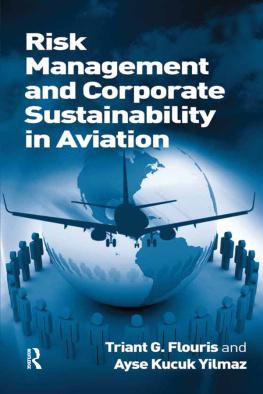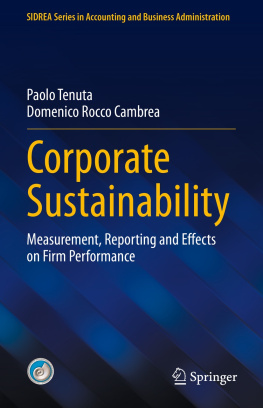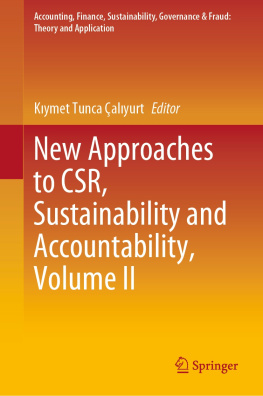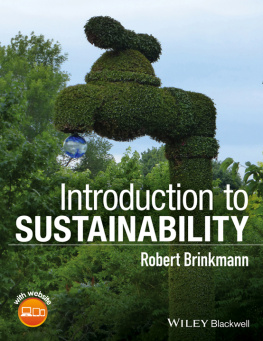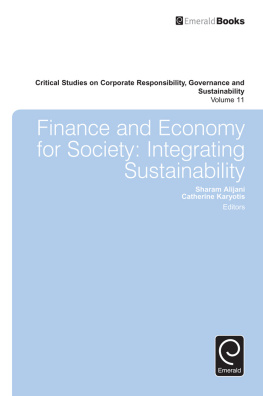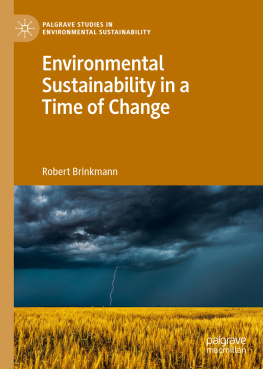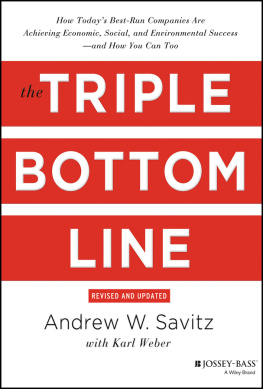RISK MANAGEMENT AND CORPORATE SUSTAINABILITY IN AVIATION
This book is dedicated to our families
Risk Management and Corporate Sustainability in Aviation
TRIANT G. FLOURIS
and
AYSE KUCUK YILMAZ

First published 2011 by Ashgate Publishing
Published 2016 by Routledge
2 Park Square, Milton Park, Abingdon, Oxon OX14 4RN
711 Third Avenue, New York, NY 10017, USA
Routledge is an imprint of the Taylor & Francis Group, an informa business
Copyright Triant G. Flouris and Ayse Kucuk Yilmaz 2011
Triant G. Flouris and Ayse Kucuk Yilmaz have asserted their rights under the Copyright, Designs and Patents Act, 1988, to be identified as the authors of this work.
All rights reserved. No part of this publication may be reproduced, stored in a retrieval system or transmitted in any form or by any means, electronic, mechanical, photocopying, recording or otherwise without the prior permission of the publisher.
Notice:
Product or corporate names may be trademarks or registered trademarks,and are used only for identification and explanation without intent to infringe.
British Library Cataloguing in Publication Data
Flouris, Triant G.
Risk management and corporate sustainability in aviation.
1. Aeronautics, Commercial--Management. 2. Aeronautics-
Safety measures. 3. Aeronautics, Commercial--Employees-
Training of. 4. Aeronautics, Commercial--Environmental
aspects. 5. Risk management. 6. Social responsibility of
business. 7. Organizational change--Management.
I. Title II. Kucuk Yilmaz, Ayse.
387.7068-dc22
Library of Congress Cataloging-in-Publication Data
Flouris, Triant G.
Risk management and corporate sustainability in aviation / by Triant Flouris and Ayse Kucuk Yilmaz.
p. cm.
Includes bibliographical references and index.
ISBN 978-1-4094-1199-4 (hardback)
1. Aeronautics--Management. 2. Risk management. I. Kucuk Yilmaz, Ayse.
II. Title.
HE9774.F56 2011
387.70681--dc22
2011011352
ISBN 978-1-409-41199-4 (hbk)
Contents
List of Figures and Tables
Figures
Tables
Foreword
TAV Airports is a holding company that operates ten airports throughout the world. Four of these airports are located in Turkey while the remaining six are located elsewhere in the world. TAV Airports undertakes services in most areas of airport operations, namely ground handling, duty free stores, food and beverage, IT, and security.
At the time of writing, TAV Airports Holding provided services to approximately 42 million passengers, 500,000 aircraft, and 8 million cars every year. From these statistics it is easy to see that the company has a diversified and volume-based business model; diversification and mass create complexity and we are aware that complexity provides both opportunities and threats if one is not successful in their management.
In order to be successful, while exploring opportunities, we have to be aware of the threats that we face. Todays best practices may not be the best practices of the future. We at TAV are keenly aware that investors make investment decisions based not only on consideration of the financial performance of a company, but also by monitoring its management style in regard to social and environmental issues. In todays world, where advanced communication technologies exist, every kind of negative occurrence in relation to social and environmental issues is announced rapidly to the whole world. Hence companies are driven to take responsibility in social and environmental matters within the geographical regions that they operate in.
The dynamic, as a result of the aerodynamic nature of the aviation industry, is compelling us to adopt more effective and efficient risk management models integrated with strong sustainability practices. On the other hand, sustainability itself requires a dynamic improvement, growth and change of existing systems to dynamically maintain the outstanding performance of a corporation.
Our primary task is to determine the positive or negative effects of economic, social, and environmental aspects of the activities of our corporation. That is why at TAV Airports we do not view risk management as just a means of determining financial uncertainties. Rather, we focus on all dimensions of the risk elements in our businesses, concentrating also on their economic, social, and environmental impacts. We know that, with more than 15,000 employees in our organization, the human factor is one of our key assessment areas. We give much thought to the recruitment and training processes of new employees as we help them to adapt themselves to our organizations and guarantee their continued learning. This is because we are aware that we can add value to our risk management and sustainability systems in this manner.
We believe that TAV Airports Holding possesses one of the best models in the aviation industry in regards to risk management and corporate sustainability; we are committed to responding to the concerns and meeting the expectations of all our stakeholders. The book Risk Management and Corporate Sustainability in Aviation, written by Prof. Dr Triant Flouris and Asst. Prof. Dr Ayse Kucuk Yilmaz, is a key reference book for every professional serving in aviation industry with regard to risk management and sustainability. Each line of this book should be read with much attention. The diligent work of the authors will add great value to the practical implementation of risk management and sustainability models in the aviation industry.
Dr M. Sani ener
TAV Airports Group CEO
Acknowledgments
Sani Sener
Guy Loft, Margaret Younger, Charlotte Parkins and Emily Pace at Ashgate
Nursel Ilgen and Management Team (XE) at TAV Airports Holding Lorraine Arlan
Sotiria Akritidi
We would also like to acknowledge the very significant contribution to this book of the following individuals and organizations for kindly and generously giving us permission to quote their work:
Aileen Ionescu-Somers
Asuka Hoshikoshi
Brooke Jim
Burr Stewart
EUROCONTROL Information Center
Colin Meckiff
Dave Pollard
Dave Wilkins
Emily Hall
Emma Hollindrake
Geoff Thompson
Graeme Paterson
Iveta Cherneva
John R. McIntyre
Joseph C. Atkinson
Katharine Partridge
Penny Walker
PricewaterhouseCoopers LLP
R. Bruce Hutton
Ruth Tellis
Sinead Porter
Stphane Oertel
The Economist Group
Tim Johnson
Tim Padfield
Ulrich Steger
Chapter 1
Introduction to Corporate Sustainability: Enterprise-Wide Risk Management Approach to Contemporary Business Management and Organization
Continuous developments and changes in the business world require business planners to rethink the way they organize and manage their businesses for sustainability. Corporate Sustainability (also known as CS) has become a critical issue for todays business organizations. Sustainability requires the corporate system to be improved on a regular basis. Successful businesses offer the most comprehensive crisis risk management programs on the market. Economic, social, and environmental issues are creating both risks and opportunities for businesses. The integrated practice of Enterprise Risk Management (also known as ERM) with Corporate Sustainability is becoming a fundamental principle of business management and organization.
Enterprise Sustainability Risk Management (also known as ESRM) is a necessity for a business which operates in a globally warmed business environment. The implementation of Enterprise Sustainability Risk Management provides a way to address all corporate risks in a timely manner. It introduces an opportunity to turn risk issues into advantages. This book is a guide for business managers on how to apply this advanced managerial approach to their own businesses. Also, Enterprise Sustainability Risk Management enables businesses to manage the risks and maximize the opportunities through identifying both key financial and non-financial stakeholders and establishing a relationship with them regarding sustainability issues.
Next page
